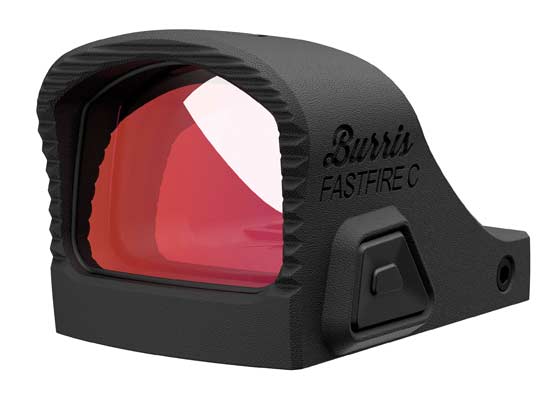Lyman Sights
From Appliances to Optics
One of the oldest firms in the shooting industry, Lyman was founded in 1878. As the story goes, 24-year-old William Lyman was already designing rifle sights and needed a company to manufacture them. William’s father, David, had prospered shipping mules, bought in Vermont and New Hampshire, to the West Indies. The rum he got in trade was popular in New England. He’d also partnered with a man who’d invented a clothes wringer and built a factory on the Lyman farm to produce it under the shingle of the Metropolitan Washing Machine Company.
William was apparently more interested in hunting and fishing than in farming or manufacturing. A Winchester 73 in .44-40 served him well, but he decided it would be more effective with better sights. So he designed the Lyman No. 1, with a tang base to put it near the shooter’s eye. The No. 1’s generous hole yielded a big field of view inside a relatively thin rim that appeared as a mere shadow. Hunters found it a very fast sight and capable of finer accuracy than critics of the open aperture predicted.
Washing Machines To Rifle Sights
From the No. 1’s debut in 1879 until William Lyman’s death in 1896, he would patent 17 rifle, handgun and shotgun sights. All were “irons.” While the first were made in the washing machine facility, demand for Lyman sights soon prompted a move to a larger factory nearby, then additions for still more manufacturing space.
In 1925, Henry and Elihu Lyman, at the company’s helm, bought the Ideal Products Reloading Tool line. Soon thereafter, they sensed swelling interest among both competitive shooters and hunters for optical sights. In New Haven, Winchester Repeating Arms was selling its A5, B3 and B4 riflescopes. In Chicopee Falls, Mass., Savage Arms marketed the Stevens line. But scopes hadn’t yet generated widespread demand among big game hunters and optics sales accounted for small slices of the firearms makers’ profit pies.
Henry and Elihu bought rights to Winchester’s scopes in 1928. By February 1929 — the year they added the Stevens stable — they’d modified the A5 and named it the Lyman 5A. Catalog #17 announced the Winchester and Stevens acquisitions and described the new scope: “We are pleased to be able to offer our new LYMAN 5A TELESCOPIC SIGHT, which is now available for general distribution … [It] is the first of a series of telescopic sights which will [appear] from time to time. The workmanship, quality and careful assembling is guaranteed by the organization that has made Lyman Metallic sights for 50 years.”
The 5A had target-type mounts. W/E adjustments were in rings which let the scope slide against a spring during recoil. Eye relief was only 1-½” and field of view at 100 yards a narrow 18 feet. The 5A featured achromatic lenses by Bausch & Lomb and came with the customer’s choice of five reticles.
Early in 1930 Lyman announced its 3x 438 scope (described in catalog #25, in 1937, as a 4x). Its mount was initially the same as the 5A’s but soon changed. Quarter-minute adjustments arrived in 1933. Lyman’s first solid mount came with the 3x Stag scope that year, W/E adjustments still in the mount. The Stag expired in five years. More enduring was the Lyman Targetspot scope introduced in 1934. In 8x and 10x versions, it had an adjustable ocular, a non-rotating objective lens focusing from 50 feet to infinity. In ’37 this scope was joined by the 6x and 8x Junior Targetspot and by Lyman’s enduring Super Targetspot. Initially in 10x, 12x and 15x, the Super Targetspot appeared later in 20x, 25x even 30x. One of the most popular competition scopes ever, it was discontinued in 1978.
Hunting Scopes With A Future
In 1935 and ’36, Lyman had added the No. 22 and its successor the 422 Expert scopes for rimfire rifles. But it still had no internally adjustable scope for big game rifles. Lyman engaged Wray Hegeman, a skilled optics designer of German descent, to produce one. In 1937, the year Winchester came out with its Model 70 rifle, Lyman announced its 2-½x Alaskan. It weighed 11 oz. and had a 7/8″ steel tube.
Original length was 10-½” and bumped to 11-¼” in the 1950s. A “Fixed Alaskan” without internal W/E adjustments appeared in ’39 but got little traction at market. In 1942 dials on the standard model got caps. Result: the Lyman Alaskan All-Weather. Seven standard reticles were variations and combinations of the post and crosshair. A Lee dot joined that roster in the ’50s.
Hunters snapped up the Alaskan. It even made its way into battle in WWII. John George carried his Alaskan-scoped Griffin & Howe Model 70 to Guadalcanal and, with Merrill’s Marauders, to Burma. It evidently saw action. By war’s end — and in part because optical sights so rewarded snipers — demand for riflescopes surged. Lyman saw a need for a 4x hunting scope but Wray Hegeman decided against a 4x in the Alaskan’s tube.
The Challenger
Instead, he fashioned a scope with a 33mm front lens and a 26mm tube. Lyman announced it in 1948 as the All-Weather Challenger. Because of its front bell, the Challenger couldn’t be mounted with one-piece rings — it required split rings. In 1953 the Challenger got an alloy tube. The same year Hegeman also came up with Lyman’s first “varmint” scopes — 6x, 8x and 10x Wolverines, the 10x set for zero parallax at 200 yards. Field & Stream shooting editor Warren Page pronounced the 8x the most versatile of this trio. It seemed a perfect match for rifles in the new and popular .222 Remington.
By 1954 competition was heating up among domestic scope-makers and importers bringing riflescopes from the Far East. Lyman asked Hegeman for a new, affordable series for hunters. He designed the All-American 2-½x, 3x, 4x and 6x scopes. Their 1″ steel tubes gave way within two years to alloy. In ’57, Lyman added 8x and 10x versions. Demand for constantly centered reticles prompted Perma Center All-Americans, beginning in 1961. While Lyman had considered a variable scope in the 1950s, it waited until 1973 to announce a 3-9x. A 1-¾” 5x and a 2-7x followed. Lyman fielded a Benchrest scope in 1970. The 20x All-American was soon re-labeled “20x Light Weight Bench Rest.” This receiver-mounted scope came with 1/4- or 1/8-minute W/E dials. A 25x joined it in ’76. A 6x with parallax correction (6x-P AA) arrived in 1974, to be replaced in ’77 with the Metallic Silhouette “SL” series: 6x, 8x and 10x.
Once, at a long-ago gun show, I demurred when a fellow asked $35 for a new-in-the-box Lyman Alaskan. In this era of outsize variable scopes heavy enough to drive fence posts, I feel the sting of that decision still. My handful of fixed-power Lymans on rifles isn’t going anywhere.










